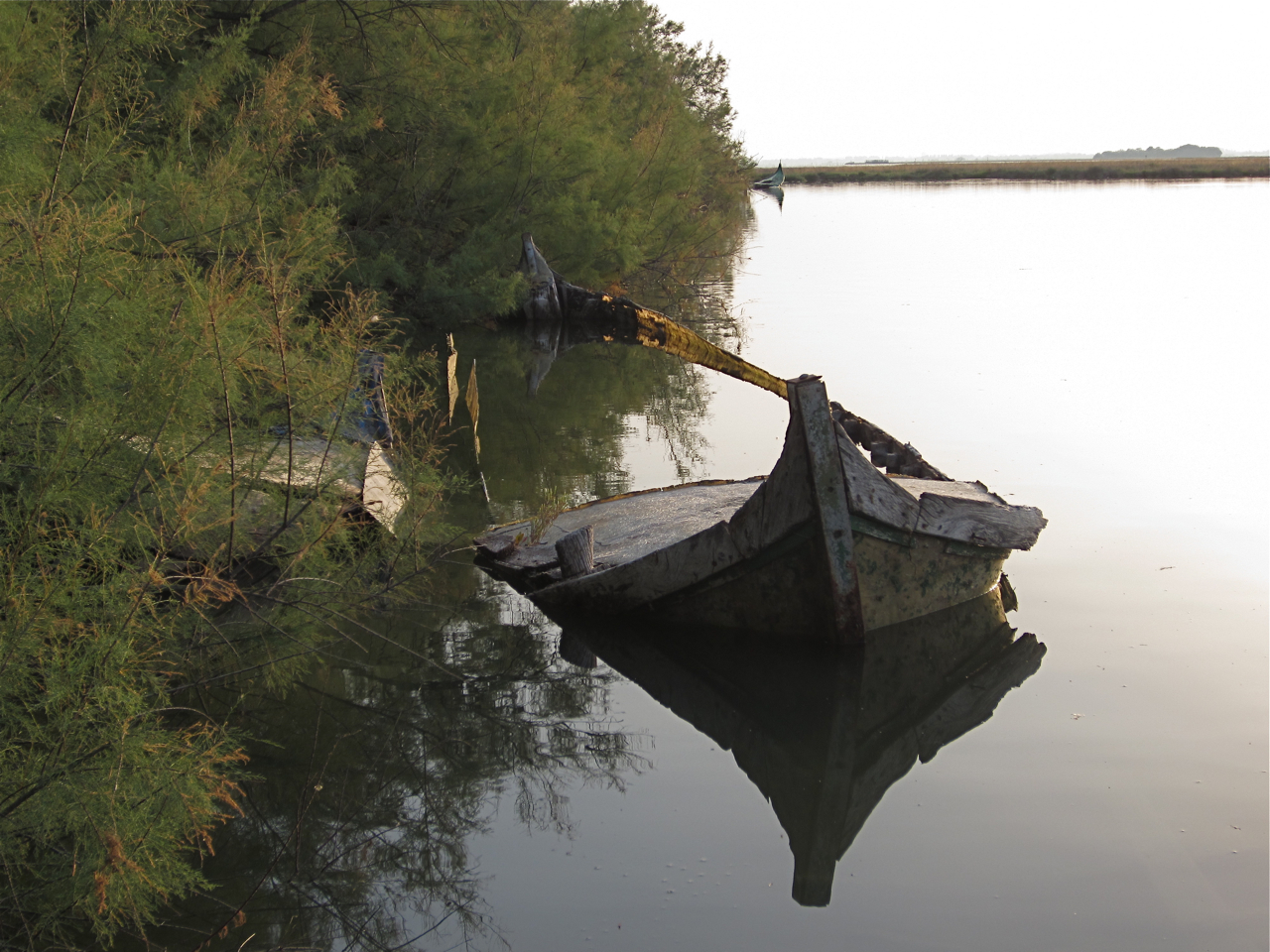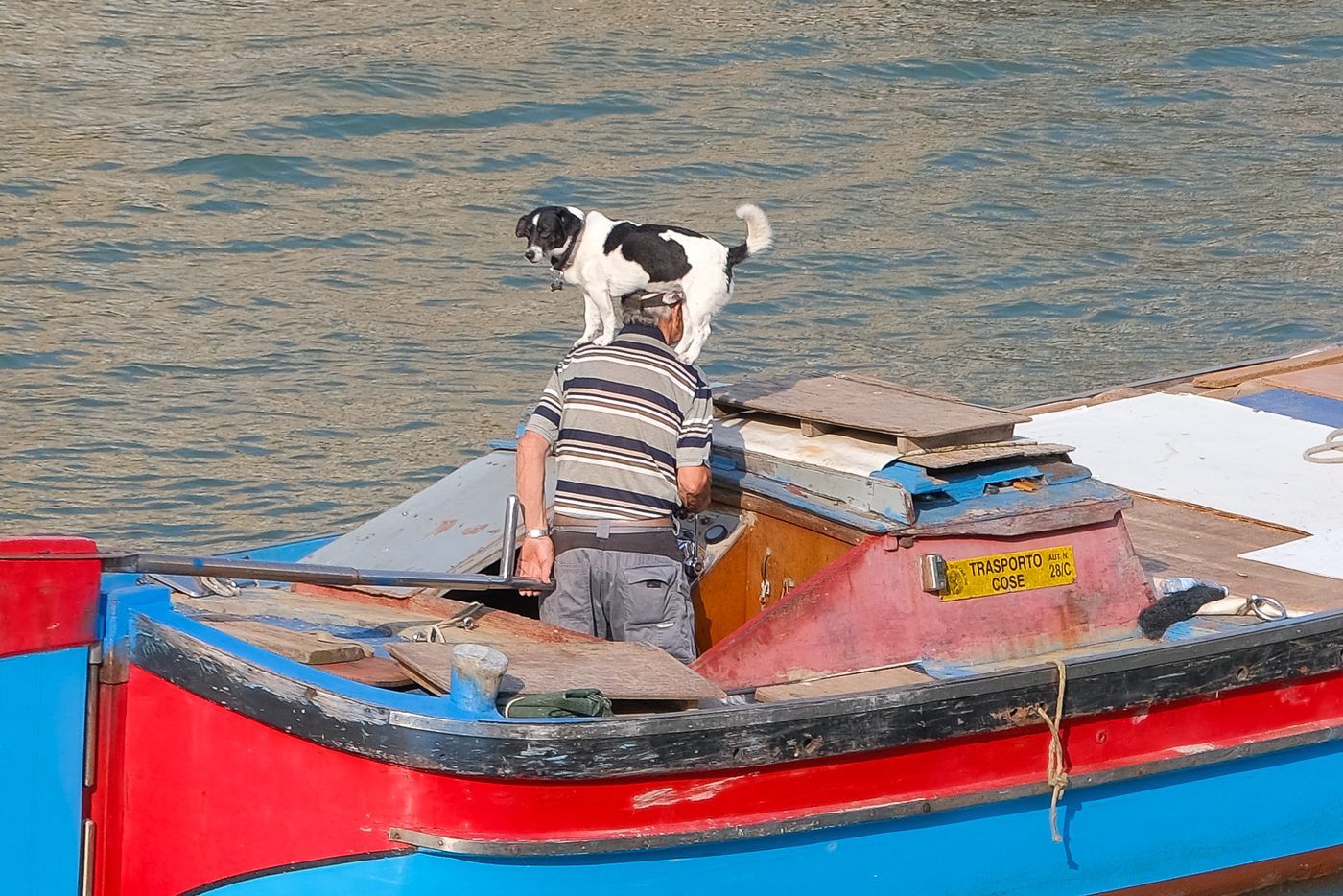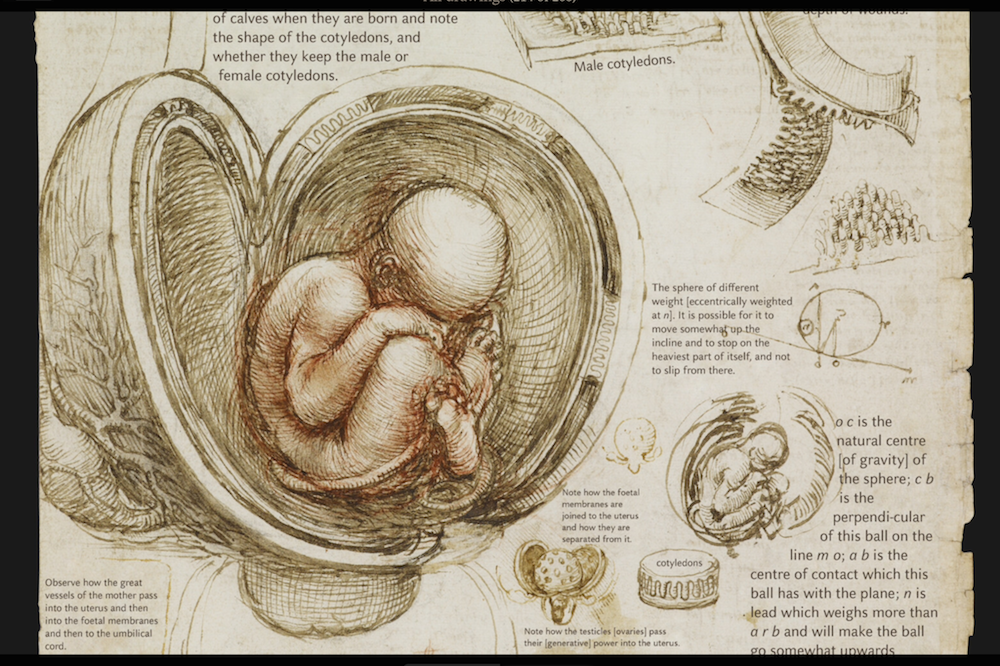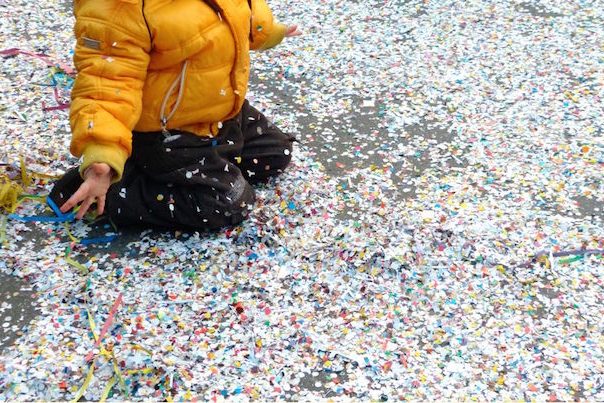Since the end of its republic, Venice has been a favorite spot for both upper-case Romantics (such as Lord Byron and Percy Shelley) and lower-case romantics (the rest of us) to contemplate in its famously crumbling palazzi and churches the transience of all glories: of empire brought low and noble families extinguished.
Or something like that.
Lately, I’ve been fascinated by more intimate reminders of transience and the vanished Venetian past: the numerous abandoned boats to be seen rotting into oblivion around the islands of the North Lagoon.
Some Venetian friends of ours have a small one-room house on one of the sparsely-populated islands near Burano—once the home of fishermen—that have in more recent years become quietly popular spots for weekend getaways. Thankfully, these islands have not become mini Sag Harbors. That is, they’re nothing like the gaudy plutocratic places that the old fishing villages of New York’s Hamptons area have become. Some fishermen still remain, wooden crab traps still line the shallow waterways, and the second homes of Venetian residents there range from the small and rustic to the downright primitive.
Considering that, to this day, neither electricity nor water are assured on such islands (even for second homes), it’s a good place to think about how hard life in the lagoon was until very recently.
The abandoned boats, partly or wholly-submerged, slowly dematerializing and being reclaimed by the lagoon, are moody reminders of this. Each one suggests a vanished owner, perhaps a small family, and, most of all, a way of life long gone.
Last summer I happened to find myself looking at a number of such boats with a man in his late 60s from Burano while standing upon a small private weathered dock that was itself headed in the same direction as the 4 or 5 boats we saw partly or entirely submerged around us. I’d just met him a half hour earlier; he’d told me he was a sculptor and a church organist.
Now he told me in Italian that he’d also been in his youth—like most native Buranese of his generation and earlier—a fisherman. He pointed to the rotting caorlina and said that he used to go out fishing on boats of that type.
A caorlina is a large heavy work boat that you can see being used in the six-person team races of, say, La Regata Storica each September. I’ve rowed one at my remiera (rowing club) here. But they didn’t use oars 30 or 40 years ago, nor motors (as I suggested), but sails, he told me.
“You went out into the Adriatic?” I asked.
“No, not in a boat like that. We stayed in the lagoon. We would stay out for 15 days at a time, going all over the lagoon. Me and one partner. In bad weather, or at night, we would use our sail as cover. We towed a little boat behind us, un battello, with supplies.”
I’d recently read that the lagoon was 35 miles long and 7 miles wide at its widest, but still couldn’t help but ask, “You didn’t come home each night? Or every couple nights?”
“No. 15 days we would stay out at a time, like the song: par quindese giorni, magno el saor...”
In spite of my faltering Italian, he paid me the compliment of imagining that I knew the snatch of song he sang quite beautifully. Of course I didn’t. Besides, I still couldn’t get over the fact that he and a partner spent 15 days at a time out on the lagoon in an open boat without a motor in what must have been the 1960s or ’70s.
“Quindici giorni…” I repeated, marveling.
“Yes. And while we were out fishing for 15 days, our wives were busy at home making us horns,” he said, laughing and using one hand to make the cornetti sign (for a cuckold) which, I’m told, can still get you into a fight if directed at the wrong Italian.
“No…” I politely dissented. He laughed again, said with a shrug, “I had others myself.”
Which is when I understood that those 15-day fishing excursions were probably not entirely devoid of visits, however brief, to land.
It wasn’t until the next day that I began kicking myself for not asking to hear the rest of the song he’d sung a bit of. I thought of going back to Burano to try to track him down again, but decided, first, to try la pescheria of the Rialto. Which is where I learned the entire thing: the following filastrocca, or lullaby:
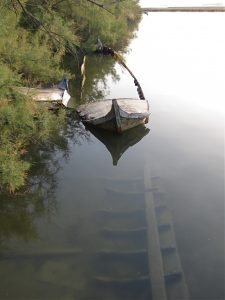
Scarpe e calseti
Piatti e pironi
Porte e balconi
Che sá da freschin.
So nato a Venessia
So fio de pescaor
Par quindese giorni
Se magna el saor.
Shoes and socks
Dishes and forks
Doors and balconies
They all smell of fish.
I’m a native Venetian
The son of a fisherman
For fifteen days
We eat el saor.
Freschin is a uniquely Venetian word in that while it does, as a Venetian/Italian dictionary will tell you, refer to the smell of fish (or more generally to other bad odors such as rotten eggs or mould), it more specifically refers to the particular smell of the Venetian lagoon at low tide. Not the smell of the canals at low tide, my Venetian-born friend and neighbor Alessandro emphasized, but that of the broad lagoon when the low tide leaves its alga or seaweed exposed.
El saor is still a common dish in Venice and its restaurants, though its original virtue seemed to be that it was a way of preparing fish so that it would keep for an extended period of time: the 15 days of those fishing voyages. It consists of sardines, onions, and vinegar, according to the fishmonger I spoke to at the Rialto. Or of Sardines, onions, vinegar and olive oil according to my trusted friend Alessandro and an old Venetian recipe book he showed me.
The recipe book also listed pinoli (pine kernels), uvetta sultanina (raisins) and farina bianca (white flour, for lightly dusting the sardines pre-frying) as other optional ingredients.
Last week our friend Alessandro and his wife had us to dinner and started off the meal with el saor (or sarde in saor, as it’s more commonly called). He’d chosen to include raisins in his recipe, which he described as the Turkish way of making the dish. My five-year-old son, Sandro, devoured it with such relish that it wasn’t hard to imagine he’d be quite happy to eat it for 15 straight days, like the Buranese fishermen of old.
However, these days it’s no longer the dietary staple it used to be, but merely a popular antipasto—which in most restaurants in town will run you anywhere from 9 to 11 euro. This fact, as much as those old rotting boats near Burano, is another concrete reminder of how much life in the lagoon has changed in the last half century.
For more about living in Venice, visit Steven Varni’s blog: veneziablog.blogspot.com
